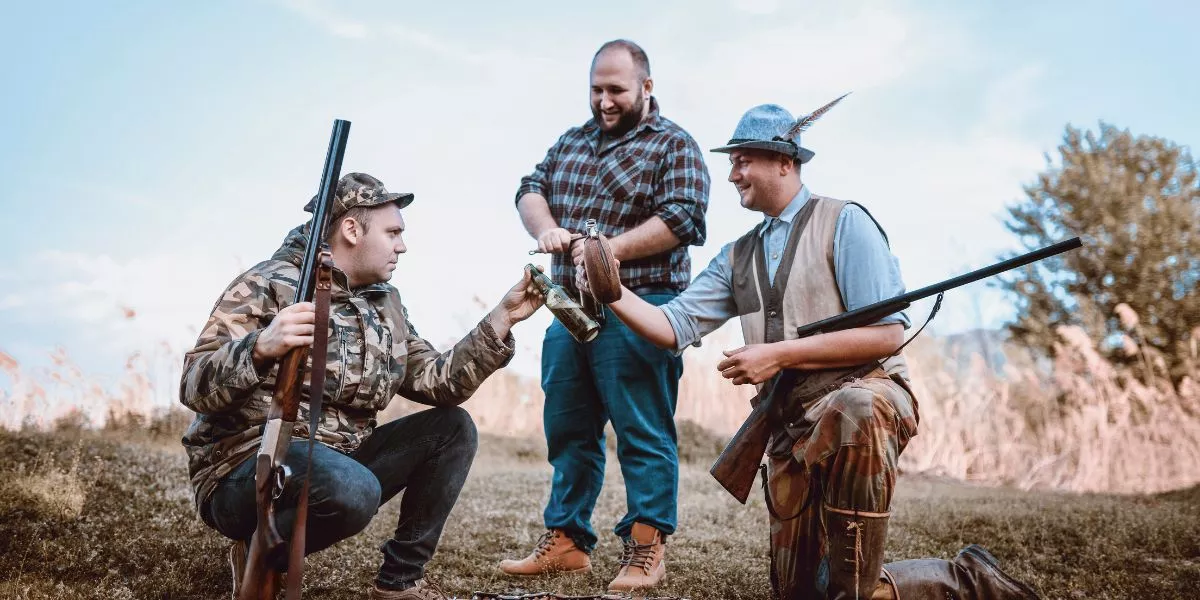
When field dressing and processing game after a successful hunt, remember to use a sharp hunting knife for skinning, bone saw for cutting bones, and strong gloves for protection. Properly skin by starting at the neck, separate skin carefully, and remove it in sections. Next, gut the game by locating and gently removing organs; clean thoroughly with water. To butcher, find muscle seams, slice perpendicular for tenderness, and trim fat. Lastly, store the meat in a cool place, consider refrigerating or freezing, and label packages with dates for freshness. These techniques will ensure the best quality meat for your enjoyment.
Tools Needed for Field Dressing
To efficiently field dress a game after a hunt, you'll require a set of essential tools.
The first tool you need is a sharp hunting knife. This knife will be your primary tool for skinning and gutting the game. Make sure it's sharp to avoid unnecessary effort.
Another vital tool is a bone saw. This will help you efficiently cut through the bones when needed. Additionally, pack a pair of strong, durable gloves to protect your hands from sharp edges and potential bacteria.
A game bag or a sturdy backpack will come in handy to carry your tools and the game meat. Lastly, don't forget to bring a compact field dressing kit that includes essentials like a gut hook, shears, and a sharpener.
With these tools in hand, you'll be well-equipped for field dressing your game with ease and precision.
Proper Skinning Techniques
For efficient field dressing after a hunt, mastering proper skinning techniques is crucial to ensure a clean and successful process.
When skinning game, start by making a small incision at the base of the animal's neck.
Using your hands, gently separate the skin from the underlying tissue, pulling it back as you go.
Keep the knife blade parallel to the body to avoid puncturing organs or damaging the meat.
Work methodically, removing the skin in sections to prevent tearing and contamination.
Gutting and Cleaning Game
When gutting and cleaning game, carefully locate the anus and genitals to begin the process of removing the internal organs. This step is crucial to ensure a clean and efficient field dressing process. Start by making a small incision around the anus and genitals, being mindful not to puncture the intestines. Once the incision is made, gently pull the organs out, being cautious not to rupture them.
Freedom in the wilderness means taking responsibility for your harvest, so handle the game with respect and care during this process. Remove the organs carefully to avoid spoiling the meat and to prevent any unwanted contamination. Remember, a successful hunt deserves proper attention to detail when field dressing and cleaning the game.
After removing the internal organs, take the time to clean the cavity thoroughly with water and ensure all traces of blood and debris are removed. This meticulous approach will help preserve the quality of the meat and ensure a delicious final product. Enjoy the satisfaction of knowing you've properly gutted and cleaned your game, setting the stage for the next steps in processing your well-deserved harvest.
Butchering for Different Cuts
Start by separating the different cuts of meat from the game using proper butchering techniques. Begin by locating the natural seams between the muscle groups. Slide your knife along these seams, making precise cuts to separate the different cuts of meat. For steaks, slice perpendicular to the muscle fibers to ensure tenderness. To make stew meat, trim away excess fat and connective tissue, then cut the meat into smaller, uniform pieces. Ground meat can be made by grinding the trimmings and excess meat.
When butchering, remember that each cut has its unique qualities and flavors. Ribeye steaks offer marbling for richness, while sirloin is leaner but still flavorful. For roasts, consider using cuts like the chuck or round for tender and juicy results. Embrace experimentation and try different cuts to find your favorite flavors and textures. Butchering your game allows you to tailor the cuts to your preferences, ensuring a personalized and satisfying dining experience.
Storing and Preserving Game Meat
To maintain the quality and freshness of game meat, proper storage and preservation techniques are essential.
After a successful hunt, ensure you store the meat in a cool environment to prevent spoilage. If you plan to consume the meat within a few days, refrigeration is ideal.
For longer storage, consider freezing the meat. Wrap it tightly in freezer paper or vacuum-seal it to avoid freezer burn. Label each package with the date to keep track of freshness. Remember to thaw frozen game meat in the refrigerator to maintain its quality.
If you prefer cured meats, consider making jerky or sausages to enjoy your game over an extended period. Additionally, marinating the meat before cooking can enhance its flavor and tenderness.
Conclusion
Now that you have learned the most effective techniques for field dressing and processing game, you can ensure that your hard-earned harvest is handled properly.
With the right tools and skills, you can skin, gut, clean, butcher, and store game meat for delicious meals ahead.
Remember to always prioritize safety, cleanliness, and proper handling practices to make the most of your hunting success.
Happy hunting and happy eating!




